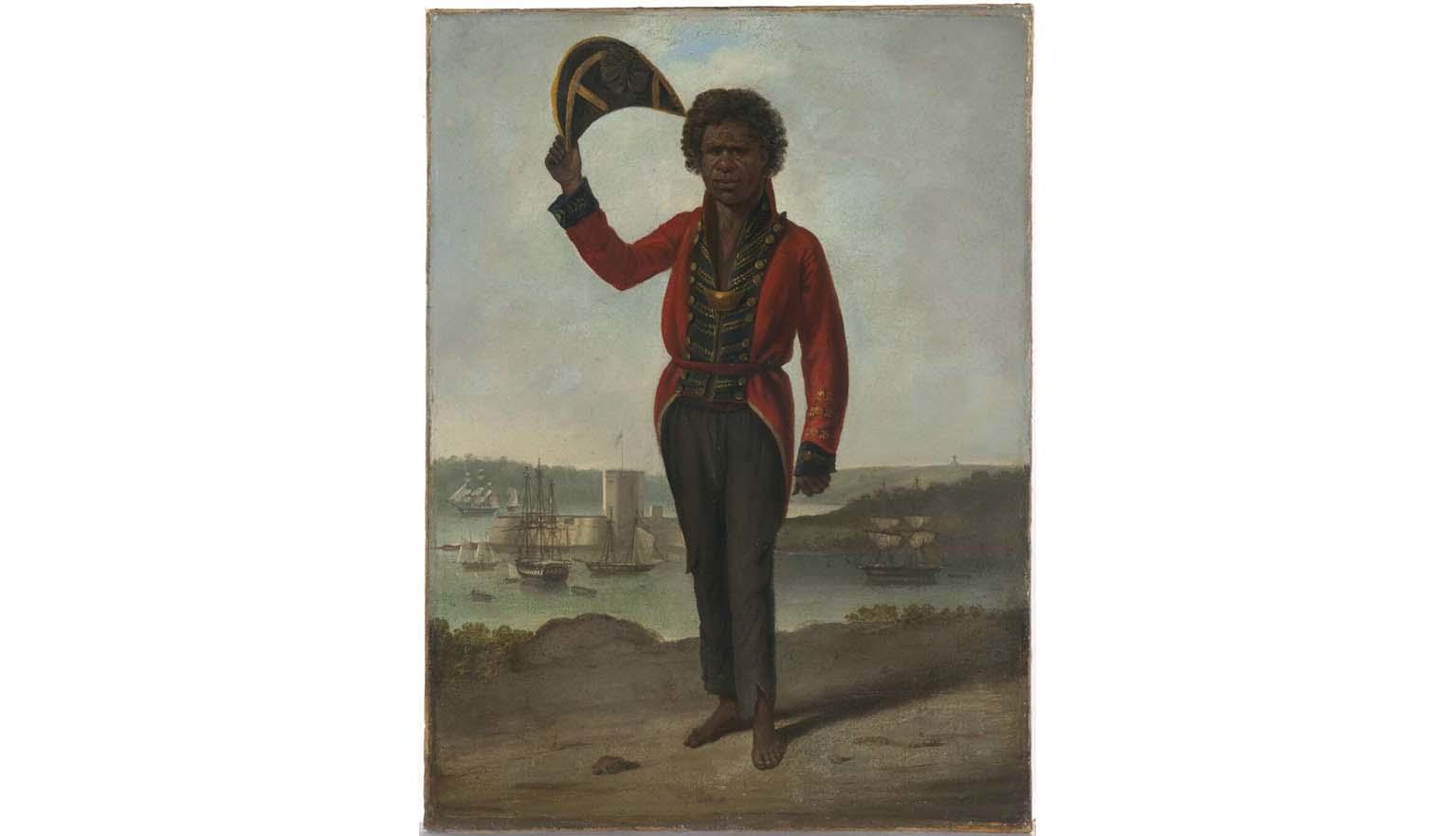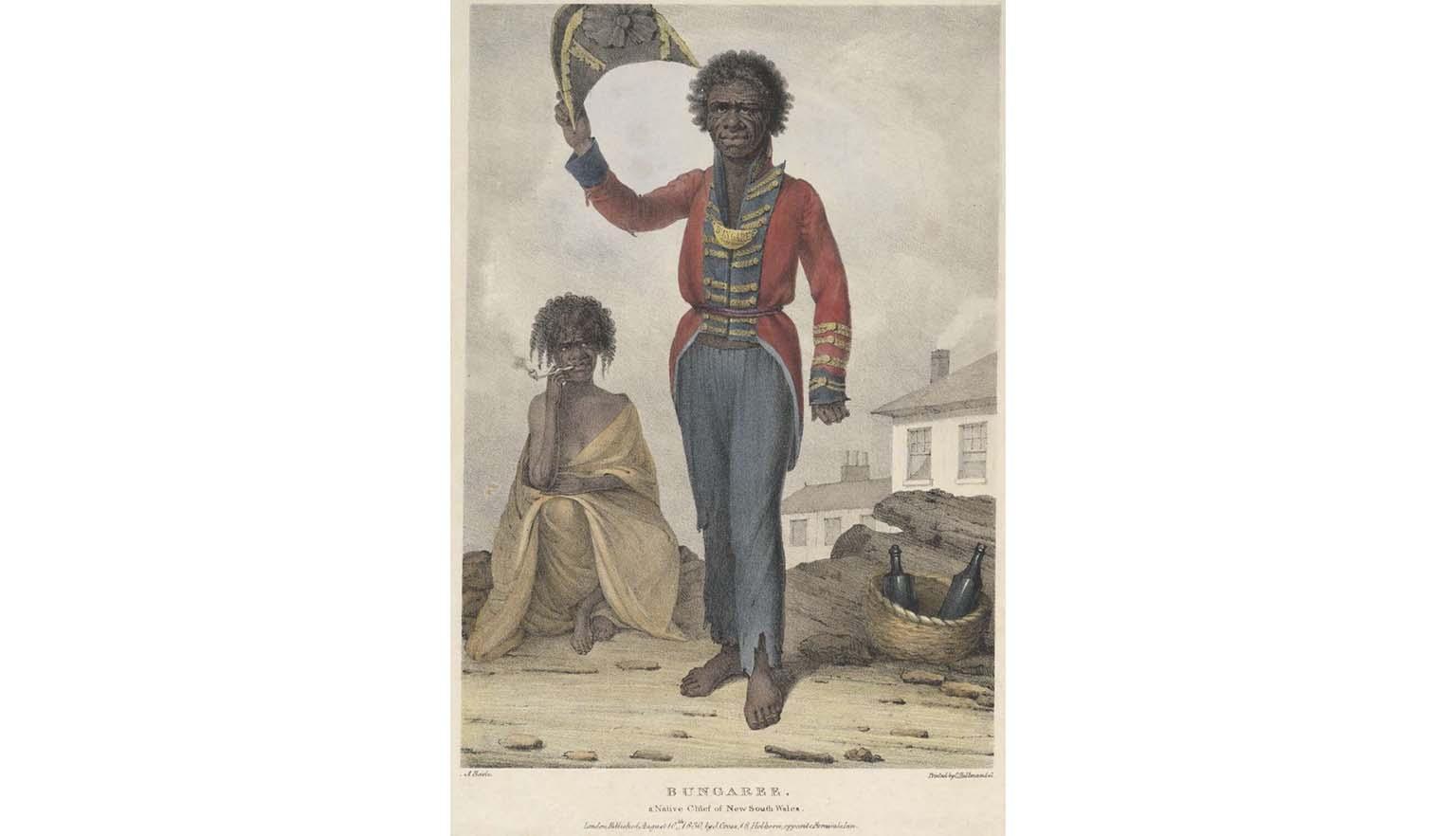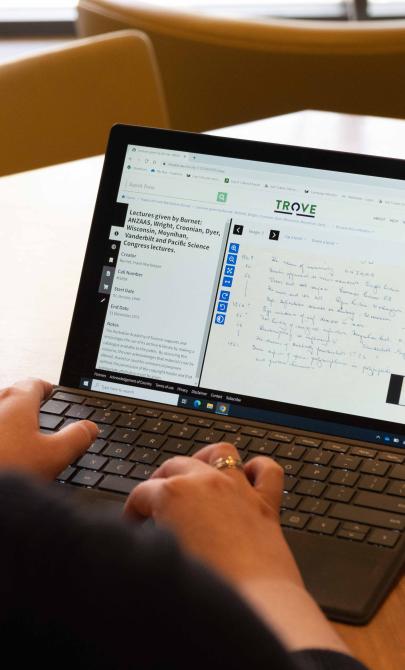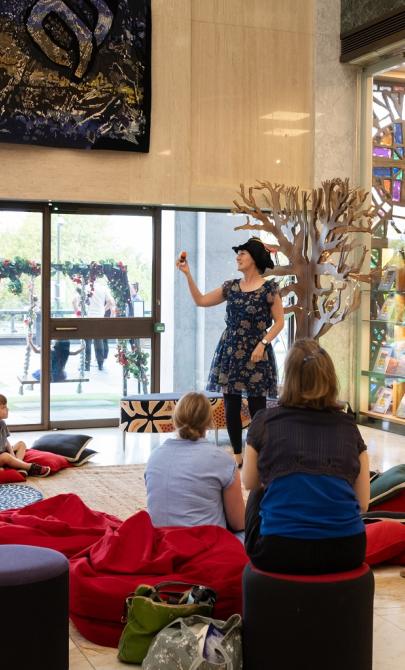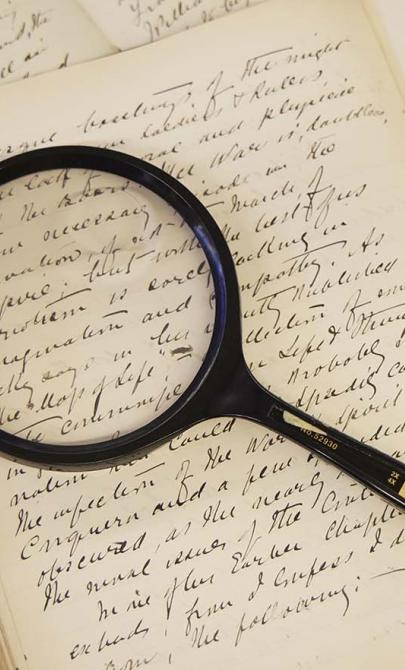Indigenous experiences
Bungaree and exploration
Bungaree played a significant role in early Australian exploration. He acted as a guide and interpreter for British navigator Matthew Flinders (1774–1814). Bungaree’s assistance and diplomacy was invaluable to Flinders' during in interactions with the groups of Indigenous people encountered during his 1801-1802 voyage.
As a crew member aboard the Investigator, Bungaree was the first known Australian-born person to circumnavigate Australia. Later, when his sailing days had ended, Bungaree was well-known on the streets of Sydney, welcoming new arrivals, and giving impersonations of authority figures.
Portraits by Augustus Earle
Earle’s first portrait of Bungaree was an oil painting showing him standing on the shores of Sydney Harbour, dressed in a British military-style uniform. Behind him are signs of the growing colony. Around his neck hangs a metal, crescent-shaped kingplate engraved with the words ‘Bungaree: Chief of the Broken Bay Tribe’.
When Earle returned to England in the late 1820s, he created a print based on his original painting but introduced several changes. In the print, Bungaree stands in front of a more confined setting. Behind him are whitewashed houses; to his right, a woman in a blanket smokes a pipe; to his left, a basket of empty bottles sits on the ground. The contrast between the two images is striking, offering insight into how Earle—and his audience—viewed Bungaree’s changing place in colonial society.
Bungaree’s final years
Bungaree lived through great change and hardship. After a long illness and a period of poverty, he died in 1830. He was buried with his wife, Cora Gooseberry, in an unmarked grave on the foreshore of Rose Bay in Sydney Harbour.
Learning activities
These activities explore early interactions between Indigenous and non-Indigenous peoples in Australia through the story of Bungaree.
Activity 1: Analysing portraits of Bungaree
Ask students to compare 2 portraits of Bungaree, Augustus Earle’s original painting and the print Earle completed after returning to England.
- Provide background notes on Bungaree’s life and significance.
- Lead a class discussion using the following questions:
- What differences can you see between the two portraits?
- What changes do you think Bungaree experienced since the arrival of European settlers? Why?
- Who do you think Bungaree’s female companion might be? What might she be thinking?
- Why do you think Bungaree chose to engage with European authorities in the way he did?
- What feelings or responses do the portraits evoke?
Activity 2: Bungaree’s voice
Invite students to step into Bungaree’s shoes:
- Ask them to imagine his experiences after the arrival of European settlers.
- Have them write a diary entry or monologue from Bungaree’s perspective, reflecting on:
- his hopes and fears
- the arrival of Europeans
- reactions from others in his community
- the significance of wearing the Kingplate presented by Governor Lachlan Macquarie
Activity 3: Indigenous ‘firsts’
Bungaree was the first known Indigenous person to circumnavigate Australia. Use this as a starting point to explore the achievements of other notable First Nations Australians.
- Ask each student to choose one person from the list or find one of their own:
- Bennelong
- Arabanoo
- David Unaipon
- Robert Kinnear
- Aya-I-Ga (‘Neighbour’)
- Reg Saunders
- Albert Namatjira
- Gwoya Jungarai
- Jimmy Little
- Oodgeroo Noonuccal
- Charles Perkins
- Lionel Rose
- Neville Bonner
- Students research and prepare a report on their chosen figure.
- They can present their findings to the class either orally or in writing.
Suggested links to other sources:
You could extend this activity by connecting it to other Treasures Gallery materials on:
